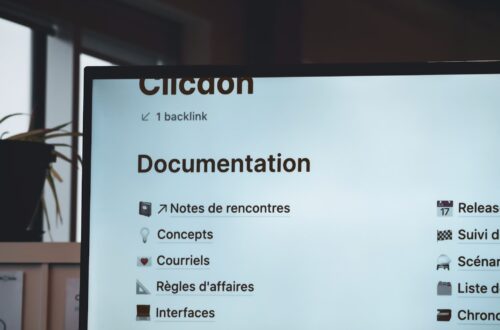Every enterprise that runs critical voice AI systems eventually faces one defining question — what happens when things go wrong?
A failed cloud zone. A corrupted model checkpoint. A power outage at the wrong time. It’s not if, but when.
Building an intelligent voice AI disaster recovery plan isn’t just an IT formality — it’s business continuity insurance for an increasingly voice-first world. And as conversational systems handle everything from customer support to financial authentication, recovery preparedness defines resilience.
Here’s how technical teams can design voice AI backup and recovery strategies that not only minimize downtime but also protect model integrity and customer trust.
The Realities of Downtime in Voice AI
In voice technology, “downtime” doesn’t just mean silence — it means broken conversations, lost intents, and interrupted user trust.
Traditional systems can afford short outages; real-time conversational AI can’t. A 30-second lag can ruin a user experience, and a one-hour downtime can cascade into revenue loss across call centers or digital channels.
So what does continuity mean here? It’s the ability for a voice system to recover from interruption and continue operations seamlessly — without data loss, degraded accuracy, or retraining from scratch.
Understanding the Voice AI Stack
To build a solid recovery plan, let’s first understand what needs protection.
A voice AI platform typically involves:
- Data Pipelines: Voice recordings, transcripts, model inputs, and structured metadata.
- Model Artifacts: ASR (speech-to-text), NLU, and TTS models — often retrained and versioned.
- Orchestration Logic: Flow configurations, intents, and dialogue management logic.
- Integrations: External systems like CRMs, ticketing, and analytics pipelines.
Losing any one of these can cripple your business continuity.
That’s why backup strategies must operate across layers — not just files and storage buckets.
1. Data Backup: The Foundation Layer
Your first defense is data redundancy.
All voice AI backup strategies should ensure that:
- Training and inference datasets are stored in multi-region storage (at least two zones apart).
- Backups are automated and versioned daily or weekly, depending on system activity.
- Logs, model metrics, and user transcripts are preserved under encrypted storage.
Quick Aside: For regulated industries like healthcare or banking, backups also serve compliance — you must demonstrate traceable lineage of voice data.
When evaluating backup systems, think RPO (Recovery Point Objective). For most voice AI operations, an RPO of 6–12 hours is ideal — meaning you can afford to lose at most half a day of updates in the event of failure.
2. Model Checkpoints and Replication
This is where many teams fall short.
Backing up databases is easy — backing up AI models is trickier.
Each model version, especially NLU and ASR, must have:
- Version control metadata (hyperparameters, training data snapshot, model architecture).
- Replication strategy to a secondary environment, often across regions.
- Cold storage copies for major releases, especially before retraining cycles.
Think of model replication like cloning the “brain” of your agent in multiple locations — ensuring cognitive continuity even when one environment fails.
In practice, enterprises using distributed voice AI systems mirror models between cloud regions using object replication (e.g., AWS S3 Cross-Region Replication).
3. Infrastructure and Service-Level Recovery
Voice pipelines are latency-sensitive, often orchestrating across speech recognition, language understanding, and integrations. When one service fails, cascading timeouts can follow.
Your voice AI disaster recovery plan should therefore define:
- Failover architecture with automated service restarts or container re-deployments.
- Traffic rerouting using DNS-based load balancing (so users get redirected instantly).
- Microservice isolation — if TTS crashes, ASR still works.
Most modern voice AI providers, such as TringTring.ai, now design their infrastructure to maintain sub-300ms latency even during failovers. That requires both edge redundancy and health-based routing policies.
“We once had a regional outage in Europe, and not a single user noticed — traffic auto-failed to Asia in under a second.”
— David Moretti, Infrastructure Lead, Global Communications Firm
4. Configuration and Workflow Preservation
When rebuilding from a disruption, restoring your data isn’t enough — your voice orchestration logic must come back exactly as it was.
That’s why configuration management must be versioned like code:
- Store all dialogue flows, triggers, and response templates in version-controlled repositories.
- Use Infrastructure as Code (IaC) tools (like Terraform or Ansible) to re-provision infrastructure quickly.
- Maintain separate configuration backups for each deployment environment (dev, staging, production).
This makes disaster recovery reproducible, not manual.
5. Testing Recovery Readiness
Plans that aren’t tested don’t work.
Teams must simulate outages and restoration to validate assumptions.
Quarterly disaster recovery drills are crucial to confirm:
- Backup integrity (no corrupted files).
- System boot times under load.
- Failover performance under concurrent calls.
A mature voice AI resilience framework measures both MTTR (Mean Time to Recovery) and MTBF (Mean Time Between Failures).
Enterprises targeting uptime above 99.9% must demonstrate an MTTR under 10 minutes for core services.
6. Security and Encryption
Recovery is useless if backups are compromised.
Security must be embedded in every phase of your voice AI backup process:
- Encrypt data at rest (AES-256) and in transit (TLS 1.3).
- Use separate encryption keys for different storage regions.
- Restrict restore privileges to authorized roles only.
Pro Tip: Always test decryption during recovery drills — many teams discover broken encryption keys too late.
7. Automation and Orchestration
The future of disaster recovery planning is automation.
AI-driven monitoring systems can detect anomalies — like surging error rates or unresponsive services — and trigger self-healing mechanisms.
For example, orchestration platforms can:
- Spin up new nodes automatically.
- Restore the latest stable model version.
- Reconnect to third-party APIs post-restart.
Automation doesn’t remove human oversight — it simply reduces decision latency when minutes matter most.
8. Business Continuity and Communication
Even with flawless recovery mechanics, your plan must cover communication.
When a disruption occurs, who informs stakeholders? How are customers notified without causing panic?
Effective business continuity for voice AI involves defined escalation trees and transparent updates.
Post-incident retrospectives must feed back into the documentation — refining your playbooks over time.
And remember: continuity isn’t just about recovery speed — it’s about customer perception.
Common Pitfalls in Voice AI Recovery Planning
Despite best intentions, most enterprises make predictable mistakes:
- No model backup automation: Manual uploads missed after updates.
- Siloed storage systems: Speech data and models backed up separately, breaking cross-dependency.
- Ignoring configuration files: Leads to partial recovery at best.
- Unverified data restores: Backups exist but haven’t been tested for integrity.
Avoiding these pitfalls often means treating disaster recovery as a design problem, not a reactive IT issue.
Designing for Resilience: The Strategic Layer
Recovery planning isn’t only about minimizing downtime — it’s about protecting business continuity.
A resilient voice AI platform protects:
- Revenue: Through uninterrupted service availability.
- Data Integrity: Ensuring model reproducibility and compliance.
- Customer Trust: Avoiding the perception of “unreliable automation.”
And as more enterprises deploy voice systems globally, regional redundancy and regulatory compliance (like GDPR for EU data zones) become non-negotiable.
In short, voice system resilience is both a technical and strategic advantage.
The Bottom Line
Resilience is a product of preparation.
Every enterprise can build its own continuity framework, but few can afford to learn it through failure.
By building multi-layered backup strategies, automating model replication, and regularly testing recovery workflows, you transform your voice AI system from reactive to resilient.
Downtime may be inevitable — but disruption isn’t.





